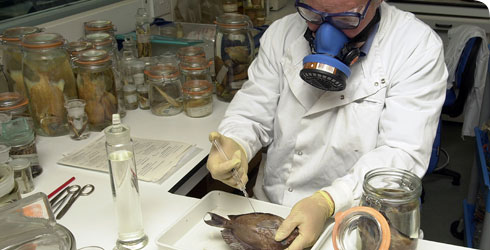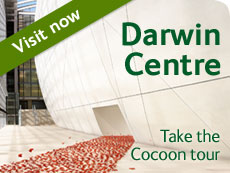The science of natural history
In some ways, biological science has remained unchanged – we still use the same method of classifying living things that originated in the eighteenth century. In other ways, we have made unbelievable progress, right down to unravelling the secrets of DNA. Find out how the Museum's scientists collect the information they need, the history of scientific discovery and why the information affects every single one of us.
-

Museum research
Discover the innovations, implications and inspirations behind the Museum's research.
-

Taxonomy and systematics
How do we name, rank and classify organisms? And what other ways are there to examine wildlife? Explore the Museum's extensive resources to discover the answers.
-

Expeditions and collecting
Read about the early voyages of discovery and find out why the Museum's collections are so vital to our knowledge of the past, present and future.
-

Natural history pioneers
Learn about the life and work of revolutionary scientists, explorers and artists who have opened our eyes to the natural world.
-

The scientific process
How do scientists work out the age of rocks? And what have they learned about the relationships between species from modern technologies like powerful microscopes and DNA sequencing?
Toolbox
Art, nature and imaging

Discover how natural history art and imaging techniques have developed since the 17th century and explore selected artworks from the Museum’s world-class art collections.

